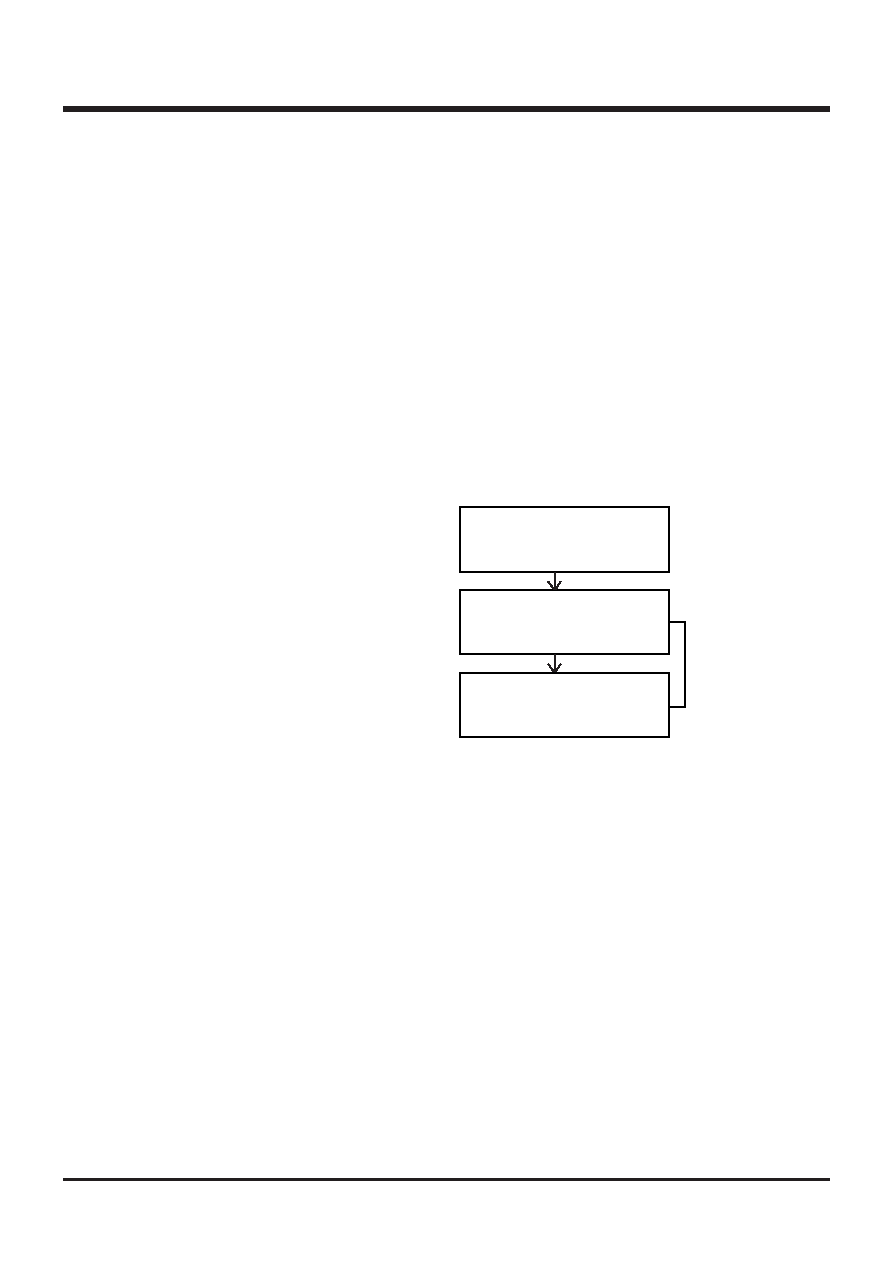- 您現(xiàn)在的位置:買賣IC網(wǎng) > PDF目錄180184 > M38022M4D384FS (Mitsubishi Electric Corporation) LOW-VOLTAGE 10-BIT ANALOG-TO-DIGITAL CONVERTER WITH SERIAL CONTROL & 8 INPUTS 20-CDIP -55 to 125 PDF資料下載
參數(shù)資料
| 型號(hào): | M38022M4D384FS |
| 廠商: | Mitsubishi Electric Corporation |
| 英文描述: | LOW-VOLTAGE 10-BIT ANALOG-TO-DIGITAL CONVERTER WITH SERIAL CONTROL & 8 INPUTS 20-CDIP -55 to 125 |
| 中文描述: | 8位單片機(jī) |
| 文件頁(yè)數(shù): | 56/207頁(yè) |
| 文件大小: | 2389K |
| 代理商: | M38022M4D384FS |
第1頁(yè)第2頁(yè)第3頁(yè)第4頁(yè)第5頁(yè)第6頁(yè)第7頁(yè)第8頁(yè)第9頁(yè)第10頁(yè)第11頁(yè)第12頁(yè)第13頁(yè)第14頁(yè)第15頁(yè)第16頁(yè)第17頁(yè)第18頁(yè)第19頁(yè)第20頁(yè)第21頁(yè)第22頁(yè)第23頁(yè)第24頁(yè)第25頁(yè)第26頁(yè)第27頁(yè)第28頁(yè)第29頁(yè)第30頁(yè)第31頁(yè)第32頁(yè)第33頁(yè)第34頁(yè)第35頁(yè)第36頁(yè)第37頁(yè)第38頁(yè)第39頁(yè)第40頁(yè)第41頁(yè)第42頁(yè)第43頁(yè)第44頁(yè)第45頁(yè)第46頁(yè)第47頁(yè)第48頁(yè)第49頁(yè)第50頁(yè)第51頁(yè)第52頁(yè)第53頁(yè)第54頁(yè)第55頁(yè)當(dāng)前第56頁(yè)第57頁(yè)第58頁(yè)第59頁(yè)第60頁(yè)第61頁(yè)第62頁(yè)第63頁(yè)第64頁(yè)第65頁(yè)第66頁(yè)第67頁(yè)第68頁(yè)第69頁(yè)第70頁(yè)第71頁(yè)第72頁(yè)第73頁(yè)第74頁(yè)第75頁(yè)第76頁(yè)第77頁(yè)第78頁(yè)第79頁(yè)第80頁(yè)第81頁(yè)第82頁(yè)第83頁(yè)第84頁(yè)第85頁(yè)第86頁(yè)第87頁(yè)第88頁(yè)第89頁(yè)第90頁(yè)第91頁(yè)第92頁(yè)第93頁(yè)第94頁(yè)第95頁(yè)第96頁(yè)第97頁(yè)第98頁(yè)第99頁(yè)第100頁(yè)第101頁(yè)第102頁(yè)第103頁(yè)第104頁(yè)第105頁(yè)第106頁(yè)第107頁(yè)第108頁(yè)第109頁(yè)第110頁(yè)第111頁(yè)第112頁(yè)第113頁(yè)第114頁(yè)第115頁(yè)第116頁(yè)第117頁(yè)第118頁(yè)第119頁(yè)第120頁(yè)第121頁(yè)第122頁(yè)第123頁(yè)第124頁(yè)第125頁(yè)第126頁(yè)第127頁(yè)第128頁(yè)第129頁(yè)第130頁(yè)第131頁(yè)第132頁(yè)第133頁(yè)第134頁(yè)第135頁(yè)第136頁(yè)第137頁(yè)第138頁(yè)第139頁(yè)第140頁(yè)第141頁(yè)第142頁(yè)第143頁(yè)第144頁(yè)第145頁(yè)第146頁(yè)第147頁(yè)第148頁(yè)第149頁(yè)第150頁(yè)第151頁(yè)第152頁(yè)第153頁(yè)第154頁(yè)第155頁(yè)第156頁(yè)第157頁(yè)第158頁(yè)第159頁(yè)第160頁(yè)第161頁(yè)第162頁(yè)第163頁(yè)第164頁(yè)第165頁(yè)第166頁(yè)第167頁(yè)第168頁(yè)第169頁(yè)第170頁(yè)第171頁(yè)第172頁(yè)第173頁(yè)第174頁(yè)第175頁(yè)第176頁(yè)第177頁(yè)第178頁(yè)第179頁(yè)第180頁(yè)第181頁(yè)第182頁(yè)第183頁(yè)第184頁(yè)第185頁(yè)第186頁(yè)第187頁(yè)第188頁(yè)第189頁(yè)第190頁(yè)第191頁(yè)第192頁(yè)第193頁(yè)第194頁(yè)第195頁(yè)第196頁(yè)第197頁(yè)第198頁(yè)第199頁(yè)第200頁(yè)第201頁(yè)第202頁(yè)第203頁(yè)第204頁(yè)第205頁(yè)第206頁(yè)第207頁(yè)

3802 GROUP USER’S MANUAL
3-23
APPENDIX
3.3 Notes on use
(3) Stop of data transmission and reception in a clock synchronous serial I/O mode
As for the serial I/O1 that can be used as either a clock synchronous or an asynchronous (UART) serial I/O, clear
both the transmit enable bit and receive enable bit to “0” (transmit and receive disabled) at the same time in the
following case:
q when stopping data transmission and reception during transmitting and receiving data in the clock synchronous
mode (when data is transmitted and received in the clock synchronous serial I/O mode, any one of data
transmission and reception cannot be stopped.)
Reason
In the clock synchronous serial I/O mode, the same clock is used for transmission and reception. If any one of
transmission and reception is disabled, a bit error occurs because transmission and reception cannot be
synchronized.
In this mode, the clock circuit of the transmission circuit also operates for data reception. Accordingly, the
transmission circuit does not stop by clearing only the transmit enable bit to “0” (transmit disabled). Also, the
transmission circuit is not initialized by clearing the serial I/O1 enable bit to “0” (serial I/O1 disabled) (refer to (1)).
_____
(4) The SRDY pin on a receiving side
_____
When signals are output from the SRDY pin on the reception side by using an external clock in the clock
_____
synchronous serial I/O mode, set all of the receive enable bit, the SRDY output enable bit, and the transmit enable
bit to “1” (transmit enabled).
(5) Stop of data reception in a clock synchronous
serial I/O mode
Set the serial I/O1 control register again after the
transmission and the reception circuits are reset by
clearing both the transmit enable bit and the receive
enable bit to “0.”
Clear both the transmit
enable bit (TE) and the
receive enable bit (RE) to “0”
Set the bits 0 to 3 and bit 6 of
the serial I/O1 control
register
Set both the transmit enable
bit (TE) and the receive
enable bit (RE) to “1”
Can be set with the
LDM instruction at
the same time
(6) Control of data transmission using the transmit shift completion flag
The transmit shift completion flag changes from “1” to “0” with a delay of 0.5 to 1.5 shift clocks. When checking
the transmit shift completion flag after writing a data to the transmit buffer register for controlling a data
transmission, note this delay.
(7) Control of data transmission using an external clock
When an external clock is used as the synchronous clock for data transmission, set the transmit enable bit to “1”
at “H” level of the SCLK input signal. Also, write data to the transmit buffer register at “H” level of the SCLK input
signal.
3.3.3 Notes on the A-D converter
(1) Input of signals from signal source with high impedance to an analog input pin
Make the signal source impedance for analog input low, or equip an analog input pin with an external capacitor
of 0.01
F to 1 F. Further, maek sure to check the operation of application products on the user side.
Reason
The A-D converter builds in the capacitor for analog voltage comparison. Accordingly, when signals from signal
source with high impedance are input to an analog input pin, a charge and discharge noise generates. This may
cause the A-D conversion precision to be worse.
相關(guān)PDF資料 |
PDF描述 |
|---|---|
| M38022M4D384SP | 10-Bit 38 kSPS ADC Ser. Out, Inherent S&H Function, Terminal Compat. W/TLC1549, TLC1549x 8-SOIC |
| M38022M4D384SS | 1 watt dc-dc converters |
| M38022M5-384FP | 1 watt dc-dc converters |
| M38022M5-384FS | 10-Bit 38 kSPS ADC Ser. Out, Inherent S&H Function, Terminal Compat. W/TLC1549, TLC1549x 8-PDIP |
| M38022M5-384SP | 1 watt dc-dc converters |
相關(guān)代理商/技術(shù)參數(shù) |
參數(shù)描述 |
|---|---|
| M38027E8FP | 制造商:Renesas Electronics Corporation 功能描述:M16C FLASH 256K/20K, 24MHZ,DMA,I2C,IEBU - Trays |
| M38027E8FP#U0 | 制造商:Renesas Electronics Corporation 功能描述:M16C FLASH 256K/20K, 24MHZ,DMA,I2C,IEBU -LEAD FREE VERSION - Trays |
| M38027E8FS | 制造商:Renesas Electronics Corporation 功能描述:MCU 8BIT 740 CISC 32KB EPROM 3.3V/5V 64CLCC - Bulk |
| M38027E8SS | 制造商:Renesas Electronics Corporation 功能描述:MCU 8BIT 740 CISC 32KB EPROM 3.3V/5V 64PIN SDIP - Bulk |
| M3802-BLACK-100 | 制造商:Alpha Wire 功能描述: |
發(fā)布緊急采購(gòu),3分鐘左右您將得到回復(fù)。